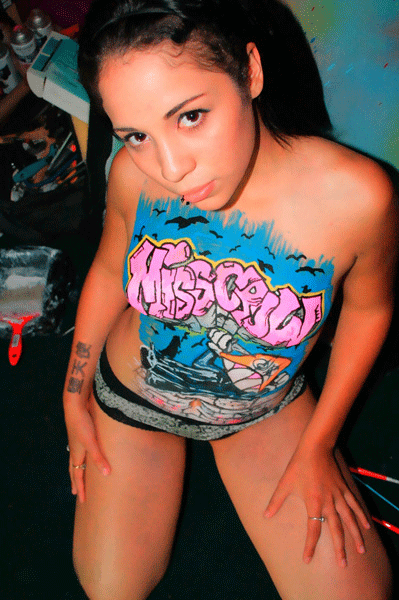The History of American Graffiti by Roger Gastman and Caleb Neelon
The History of American Graffiti by Roger Gastman and Caleb Neelon
There is a dope new book out called The History of American Graffiti by Roger Gastman and Caleb Neelon
Peep this instant classic.
Click Here for The History of American Graffiti by Roger Gastman and Caleb Neelon
Update:
Writer and former graffiti tagger Roger Gastman has turned his love of the spray arts into a lifelong career. At 19, he sold graffiti supplies, later founded a boutique media agency that specializes in street culture, and as a 33-year-old, co-authored “The History of American Graffiti” with graffiti artist Caleb Neelon. The book chronicles the history of graffiti in more than 25 cities. Most recently, Gastman co-curated an exhibition at the Los Angeles Museum of Contemporary Art (MoCA) entitled “Art in the Streets.” It’s the first major U.S. museum survey of graffiti and street art. Speakeasy spoke with Gastman about graffiti as art and his book.
The Wall Street Journal: I understand you have first-hand experience with graffiti. Where did you paint?
Roger Gastman: I ran around Washington D.C. area in the early 90s to the mid-2000s, which is how I met many of the people featured in the book. I did traditional letter-based graffiti, painting freight trains, subways and various spots around the city. Then I would travel a lot to meet other writers and paint in their spots. Go to see a concert in Milwaukee for a long weekend and paint some graffiti while I was there.
When you say “writers,” that’s what you call other graffiti artists, right?
Yeah, local graffiti artists.
How did you get your start as a “writer?”
I grew up listening to hardcore punk rock music. Everybody I met had a tag, and I thought, well, I guess I need to also. So I started writing graffiti. It was all related to the music and straight edge [subculture of hardcore punk that advocates abstinence from drugs and alcohol]. Little did I know it’s part of a much larger world. Lot of my friends got into trouble and got into something else. For whatever reason, I stuck with it.
Your co-author mentions loving the adrenaline rush. How much of graffiti is done for the thrill of it?
There’s all kinds of different adrenaline rushes attached to it. From doing a really sketchy spot and getting away from it to seeing the underpass where you did a piece of graffiti or getting a photo three months after you painted something on the side of a freight train from across the country, in the mail from a friend.
Have you ever worked in the “heavens?” I know taggers in Los Angeles will lower themselves from freeway overpasses so they can scrawl their names on freeway signs.
No, but the bigger the city, the more daredevil tactics and crazier people have to do to get noticed. Everybody is doing it for a different reason and they all have different skill sets. Some people are just taggers and not artists. Just scrawling their names across something is maybe their way to feel validated.
What’s the difference between taggers and street artists?
The name taggers is a derogatory word for graffiti writer. A tagger is typically a much younger and inexperienced person who doesn’t fully understand the entire culture and just wants to scribble their name.
So, tagging is basically how new street artists cut their teeth?
Absolutely, like A ball in baseball.
Your book is divided by city. Can you see the regional differences in the work?
The work is definitely different city by city. Especially up to the late 90s. Then, city styles become much more diluted due to magazines, digital photography and definitely due to the Internet.
Click Here for The History of American Graffiti by Roger Gastman and Caleb Neelon
The Rest is Up to You…
Michael Porfirio Mason
AKA The Peoples Champ
AKA GFK, Jr.
AKA The Sly, Slick and the Wicked
AKA The Voodoo Child
The Guide to Getting More out of Life
http://www.thegmanifesto.com
Trouble Funk – Pump Me Up (1982)
